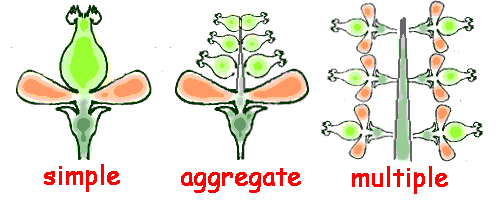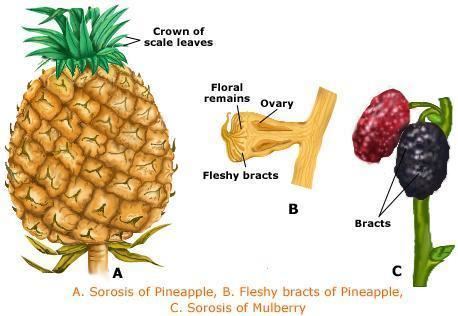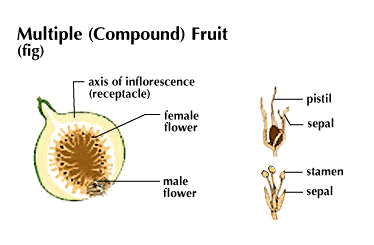 | ||
Aggregate multiple fruits
Multiple fruits, also called collective fruits, are fruiting bodies formed from a cluster of fruiting flowers, the inflorescence. Each flower in the inflorescence produces a fruit, but these mature into a single mass in which each flower has produced a true fruit. After flowering the mass is called an infructescence. Examples are the fig, pineapple, mulberry, osage-orange, and breadfruit.

In languages other than English, the meanings of multiple and aggregate fruit are reversed, so that multiple fruits merge several pistils within a single flower.
In the photograph on the left, stages of flowering and fruit development in the noni or Indian mulberry (Morinda citrifolia) can be observed on a single branch. First an inflorescence of white flowers called a head is produced. After fertilization, each flower develops into a drupe, and as the drupes expand, they become connate (merge) into a multiple fleshy fruit called a syncarp. There are also many dry multiple fruits.

Other examples of multiple fruits:


